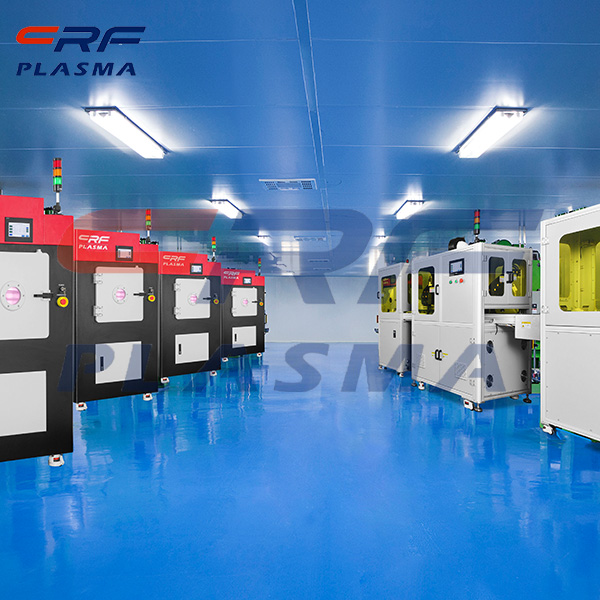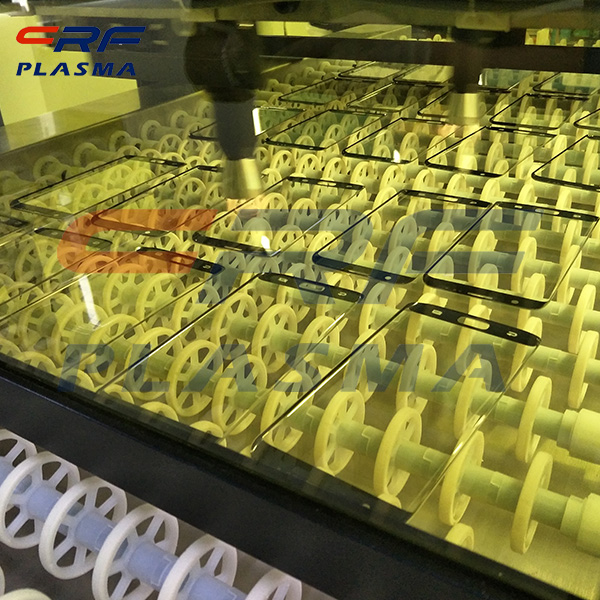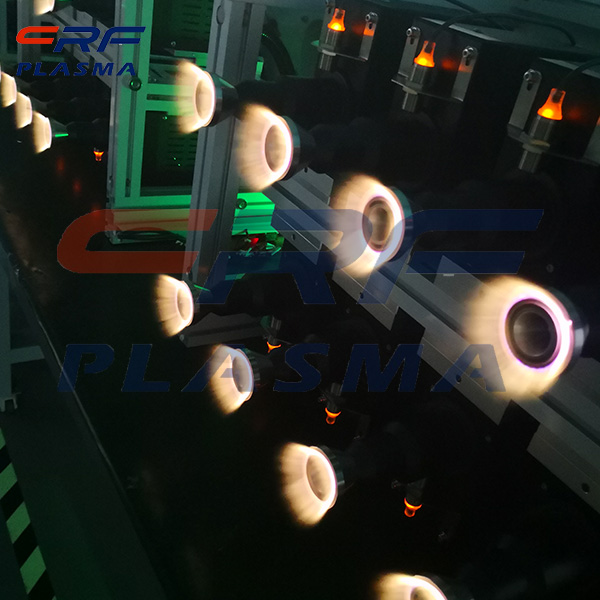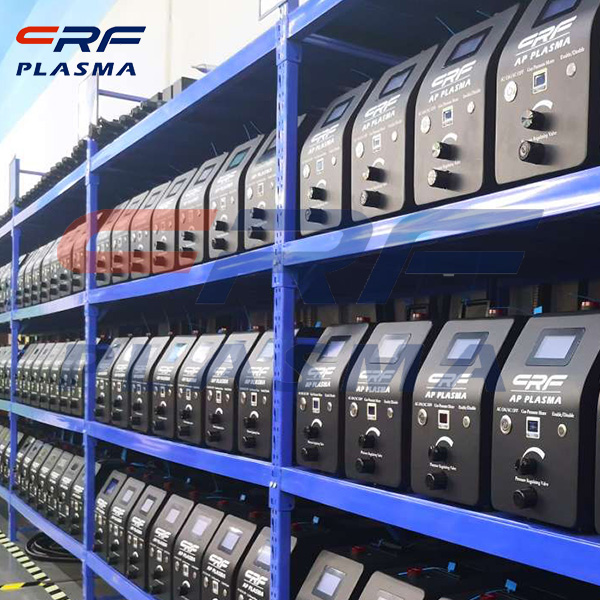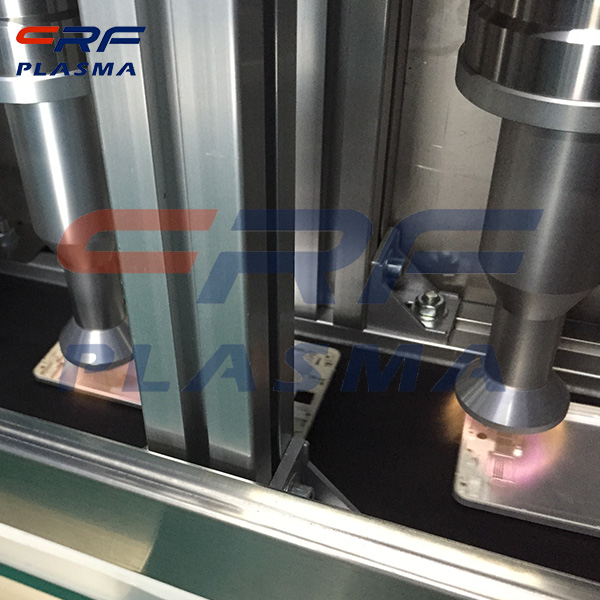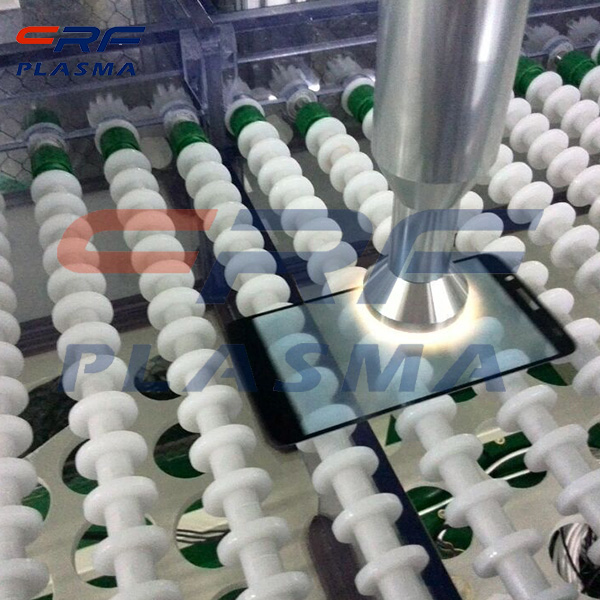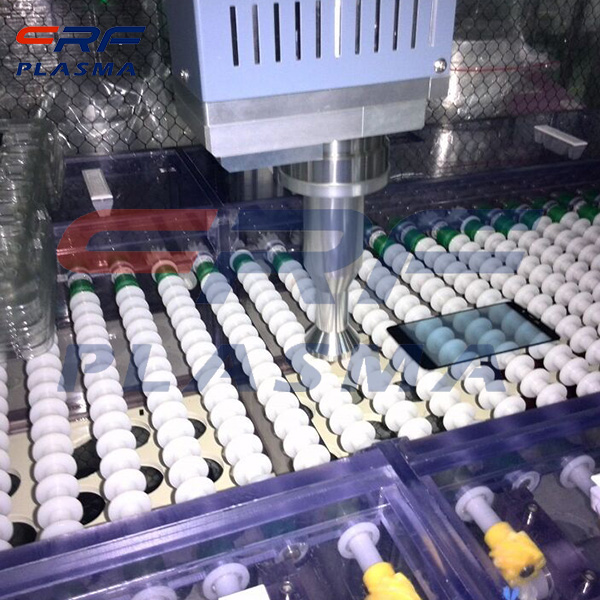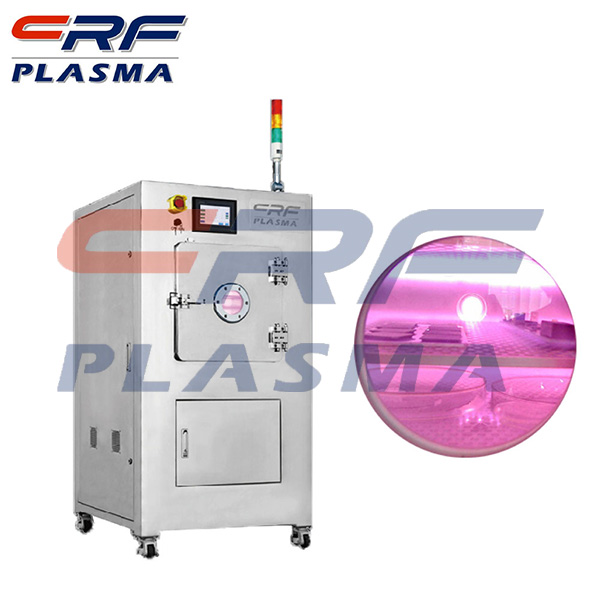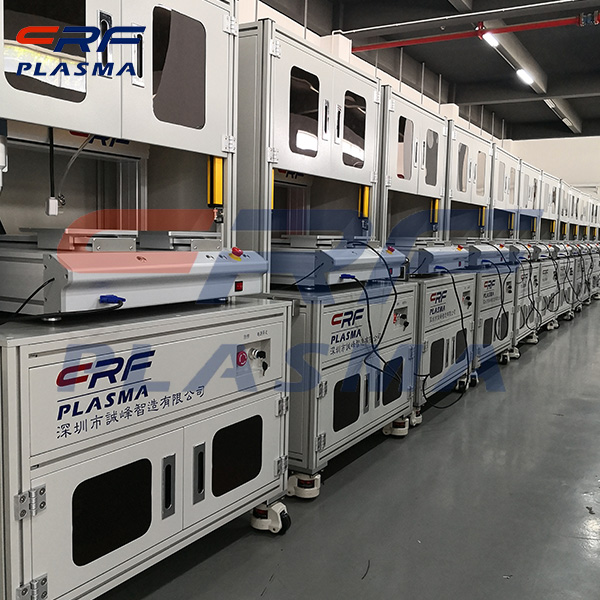
Welcome to Shenzhen Sing Fung Intelligent Manufacturing Co., Ltd.
E-mail:shaobo@sfi-crf.com
Plasma sterilization technology
- Categories:Technical Support
- Author:plasma cleaning machine-surface treatment equipment-CRF plasma machine-Sing Fung Intelligent Manufacturing
- Origin:
- Time of issue:2020-08-22
- Views:
(Summary description)Plasma sterilization technology is a new generation of high-tech sterilization technology, which can overcome some limitations and shortcomings of existing sterilization methods and improve the disinfection and sterilization effect. For example by high temperature steam method and infrared method is not suitable for sterilization processing of plastics, fiber, artificial crystals and optical glass materials and microwave method processing metal objects, weak and not easy to achieve disinfection effect of the place such as corner crack, using this technology, can very well under low temperature to eliminate bacteria sterilization processing without damages to the processed goods. The plasma working material used in this technology is non-toxic and harmless. The technology can also be used in the production line to sterilize and sterilize the products. Mechanism of plasma sterilization: 1, the role of active groups: the plasma contains a large number of reactive oxygen ions, high-energy free groups and other components, easy to bacteria, mold and spores, viruses in the protein and nucleic acid material oxidation reaction and degeneration, so that all kinds of microorganisms die. 2. High-speed particle breakdown: After the sterilization experiment, the images of bacteria and virus particles subjected to plasma were observed by electron microscopy. They were riddled with holes, which was caused by the breakdown and etching effect produced by electrons and ions with high kinetic energy. 3, the role of uv: in the process of excitation hydrogen peroxide to form plasma, accompanied by part of the uv generation, this high-energy uv photons are absorbed by microorganisms or proteins in the virus, resulting in its molecular denaturation and inactivation. Application of plasma sterilization: The plasma sterilization technology applied in the medical field started from the United States in the 1980s. Menashi et al. first proposed that halogen gas plasma has a strong bactericidal effect and can be used for rapid sterilization of non-heat-resistant medical devices. The low-temperature plasma sterilization technology was patented in 1987. Starrad 100S hydrogen peroxide plasma sterilizer developed by Johnson & Johnson was approved by FDA in 1997. Minimally invasive surgery has been widely used in medical institutions in Europe, America, Japan and other developed countries. Since 2004, it has been popularized in China, and dozens of large medical units have begun to use it. Therefore, the use of low temperature plasma sterilization technology in China's medical field has been widely recognized. Characteristics of plasma sterilization: Environmental protection: Taking hydrogen peroxide, a common clinical medium, as the medium, it is stimulated by radio frequency electromagnetic field to form low-temperature plasma and complete sterilization. The product is a small amount of water vapor and oxygen, with no toxic residue and discharge, no damage to medical personnel and no pollution to the environment. Security: Automatic control contact plate, easy to operate, no need of high temperature and high pressure, and simple installation and debugging, safe to use. Room temperature: Sterilization temperature is 35℃ ~ 45℃, dry sterilization, no damage to instruments and articles, can prolong the service life of precious instruments. To save time: Sterilization cycle is short, it can be finished in 30 ~ 50 minutes time simple instrument sterilization, 50 ~ 70 minutes in complex sterilization equipment, after the completion of the operation can be used directly, without like to natural cooling placed after high temperature sterilization, also don't like epoxy ethane need 6 ~ 48 hours after low temperature sterilization ventilation diffusion, in order to reduce the residual ethylene oxide concentration. Wide scope of application: Low temperature sterilization is suitable for a variety of materials and instruments, especially for non-heat-resistant electronic instruments such as endoscope, electronic instrument, battery, wire, photographic camera and other articles sterilization treatment, has unique advantages.
Plasma sterilization technology
(Summary description)Plasma sterilization technology is a new generation of high-tech sterilization technology, which can overcome some limitations and shortcomings of existing sterilization methods and improve the disinfection and sterilization effect. For example by high temperature steam method and infrared method is not suitable for sterilization processing of plastics, fiber, artificial crystals and optical glass materials and microwave method processing metal objects, weak and not easy to achieve disinfection effect of the place such as corner crack, using this technology, can very well under low temperature to eliminate bacteria sterilization processing without damages to the processed goods. The plasma working material used in this technology is non-toxic and harmless. The technology can also be used in the production line to sterilize and sterilize the products.
Mechanism of plasma sterilization:
1, the role of active groups: the plasma contains a large number of reactive oxygen ions, high-energy free groups and other components, easy to bacteria, mold and spores, viruses in the protein and nucleic acid material oxidation reaction and degeneration, so that all kinds of microorganisms die.
2. High-speed particle breakdown: After the sterilization experiment, the images of bacteria and virus particles subjected to plasma were observed by electron microscopy. They were riddled with holes, which was caused by the breakdown and etching effect produced by electrons and ions with high kinetic energy.
3, the role of uv: in the process of excitation hydrogen peroxide to form plasma, accompanied by part of the uv generation, this high-energy uv photons are absorbed by microorganisms or proteins in the virus, resulting in its molecular denaturation and inactivation.
Application of plasma sterilization:
The plasma sterilization technology applied in the medical field started from the United States in the 1980s. Menashi et al. first proposed that halogen gas plasma has a strong bactericidal effect and can be used for rapid sterilization of non-heat-resistant medical devices. The low-temperature plasma sterilization technology was patented in 1987. Starrad 100S hydrogen peroxide plasma sterilizer developed by Johnson & Johnson was approved by FDA in 1997. Minimally invasive surgery has been widely used in medical institutions in Europe, America, Japan and other developed countries. Since 2004, it has been popularized in China, and dozens of large medical units have begun to use it. Therefore, the use of low temperature plasma sterilization technology in China's medical field has been widely recognized.
Characteristics of plasma sterilization:
Environmental protection:
Taking hydrogen peroxide, a common clinical medium, as the medium, it is stimulated by radio frequency electromagnetic field to form low-temperature plasma and complete sterilization. The product is a small amount of water vapor and oxygen, with no toxic residue and discharge, no damage to medical personnel and no pollution to the environment.
Security:
Automatic control contact plate, easy to operate, no need of high temperature and high pressure, and simple installation and debugging, safe to use.
Room temperature:
Sterilization temperature is 35℃ ~ 45℃, dry sterilization, no damage to instruments and articles, can prolong the service life of precious instruments.
To save time:
Sterilization cycle is short, it can be finished in 30 ~ 50 minutes time simple instrument sterilization, 50 ~ 70 minutes in complex sterilization equipment, after the completion of the operation can be used directly, without like to natural cooling placed after high temperature sterilization, also don't like epoxy ethane need 6 ~ 48 hours after low temperature sterilization ventilation diffusion, in order to reduce the residual ethylene oxide concentration.
Wide scope of application:
Low temperature sterilization is suitable for a variety of materials and instruments, especially for non-heat-resistant electronic instruments such as endoscope, electronic instrument, battery, wire, photographic camera and other articles sterilization treatment, has unique advantages.
- Categories:Technical Support
- Author:plasma cleaning machine-surface treatment equipment-CRF plasma machine-Sing Fung Intelligent Manufacturing
- Origin:
- Time of issue:2020-08-22 08:48
- Views:
Plasma sterilization technology:
Plasma sterilization technology is a new generation of high-tech sterilization technology, which can overcome some limitations and shortcomings of existing sterilization methods and improve the disinfection and sterilization effect. For example by high temperature steam method and infrared method is not suitable for sterilization processing of plastics, fiber, artificial crystals and optical glass materials and microwave method processing metal objects, weak and not easy to achieve disinfection effect of the place such as corner crack, using this technology, can very well under low temperature to eliminate bacteria sterilization processing without damages to the processed goods. The plasma working material used in this technology is non-toxic and harmless. The technology can also be used in the production line to sterilize and sterilize the products.
Mechanism of plasma sterilization:
1, the role of active groups: the plasma contains a large number of reactive oxygen ions, high-energy free groups and other components, easy to bacteria, mold and spores, viruses in the protein and nucleic acid material oxidation reaction and degeneration, so that all kinds of microorganisms die.
2. High-speed particle breakdown: After the sterilization experiment, the images of bacteria and virus particles subjected to plasma were observed by electron microscopy. They were riddled with holes, which was caused by the breakdown and etching effect produced by electrons and ions with high kinetic energy.
3, the role of uv: in the process of excitation hydrogen peroxide to form plasma, accompanied by part of the uv generation, this high-energy uv photons are absorbed by microorganisms or proteins in the virus, resulting in its molecular denaturation and inactivation.
Application of plasma sterilization:
The plasma sterilization technology applied in the medical field started from the United States in the 1980s. Menashi et al. first proposed that halogen gas plasma has a strong bactericidal effect and can be used for rapid sterilization of non-heat-resistant medical devices. The low-temperature plasma sterilization technology was patented in 1987. Starrad 100S hydrogen peroxide plasma sterilizer developed by Johnson & Johnson was approved by FDA in 1997. Minimally invasive surgery has been widely used in medical institutions in Europe, America, Japan and other developed countries. Since 2004, it has been popularized in China, and dozens of large medical units have begun to use it. Therefore, the use of low temperature plasma sterilization technology in China's medical field has been widely recognized.
Characteristics of plasma sterilization:
Environmental protection:
Taking hydrogen peroxide, a common clinical medium, as the medium, it is stimulated by radio frequency electromagnetic field to form low-temperature plasma and complete sterilization. The product is a small amount of water vapor and oxygen, with no toxic residue and discharge, no damage to medical personnel and no pollution to the environment.
Security:
Automatic control contact plate, easy to operate, no need of high temperature and high pressure, and simple installation and debugging, safe to use.
Room temperature:
Sterilization temperature is 35℃ ~ 45℃, dry sterilization, no damage to instruments and articles, can prolong the service life of precious instruments.
To save time:
Sterilization cycle is short, it can be finished in 30 ~ 50 minutes time simple instrument sterilization, 50 ~ 70 minutes in complex sterilization equipment, after the completion of the operation can be used directly, without like to natural cooling placed after high temperature sterilization, also don't like epoxy ethane need 6 ~ 48 hours after low temperature sterilization ventilation diffusion, in order to reduce the residual ethylene oxide concentration.
Wide scope of application:
Low temperature sterilization is suitable for a variety of materials and instruments, especially for non-heat-resistant electronic instruments such as endoscope, electronic instrument, battery, wire, photographic camera and other articles sterilization treatment, has unique advantages.

Scan the QR code to read on your phone

TEL:0755-3367 3020 / 0755-3367 3019

E-mail:sales-sfi@sfi-crf.com

ADD:Mabao Industrial Zone, Huangpu, Baoan District, Shenzhen




